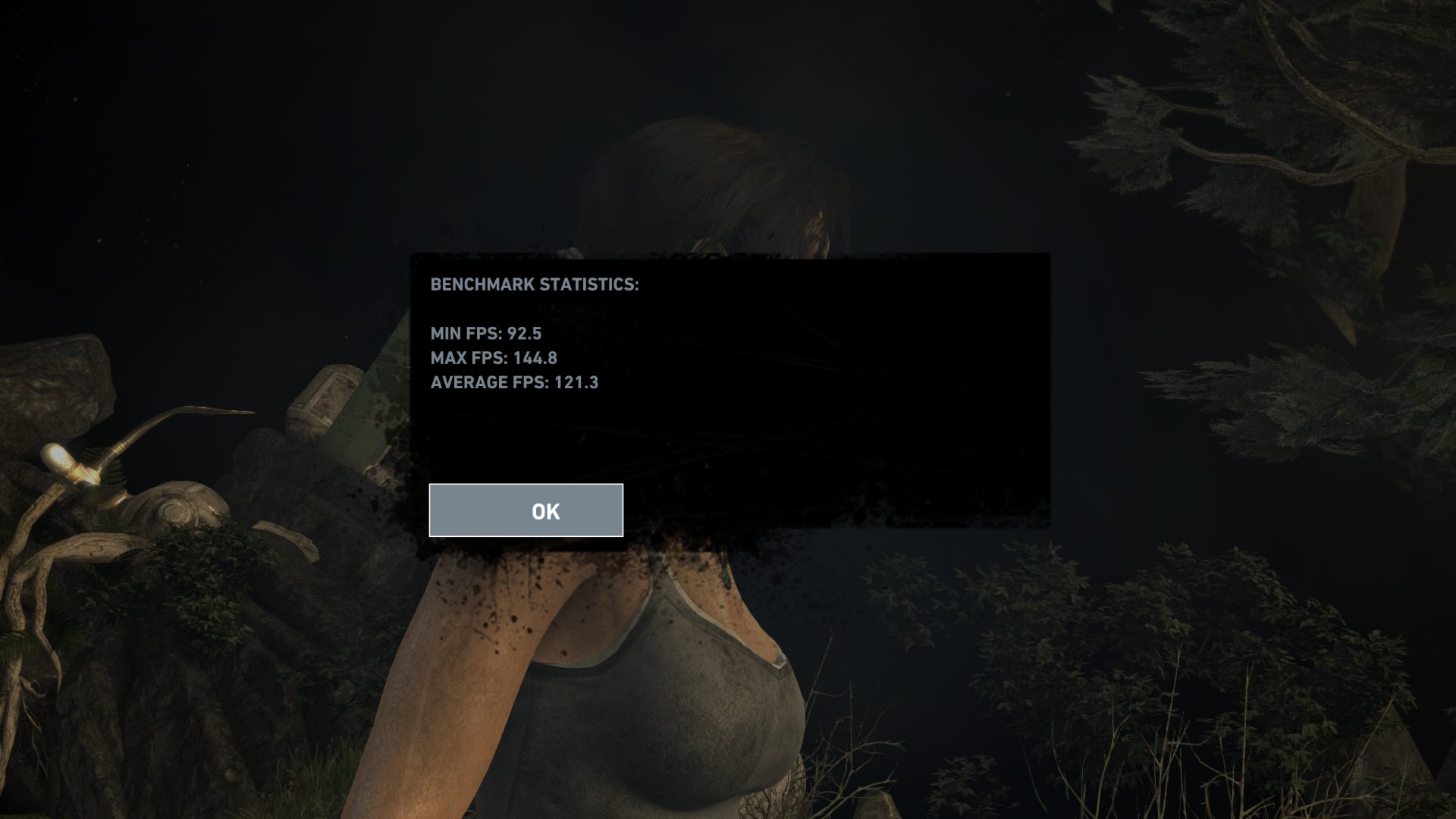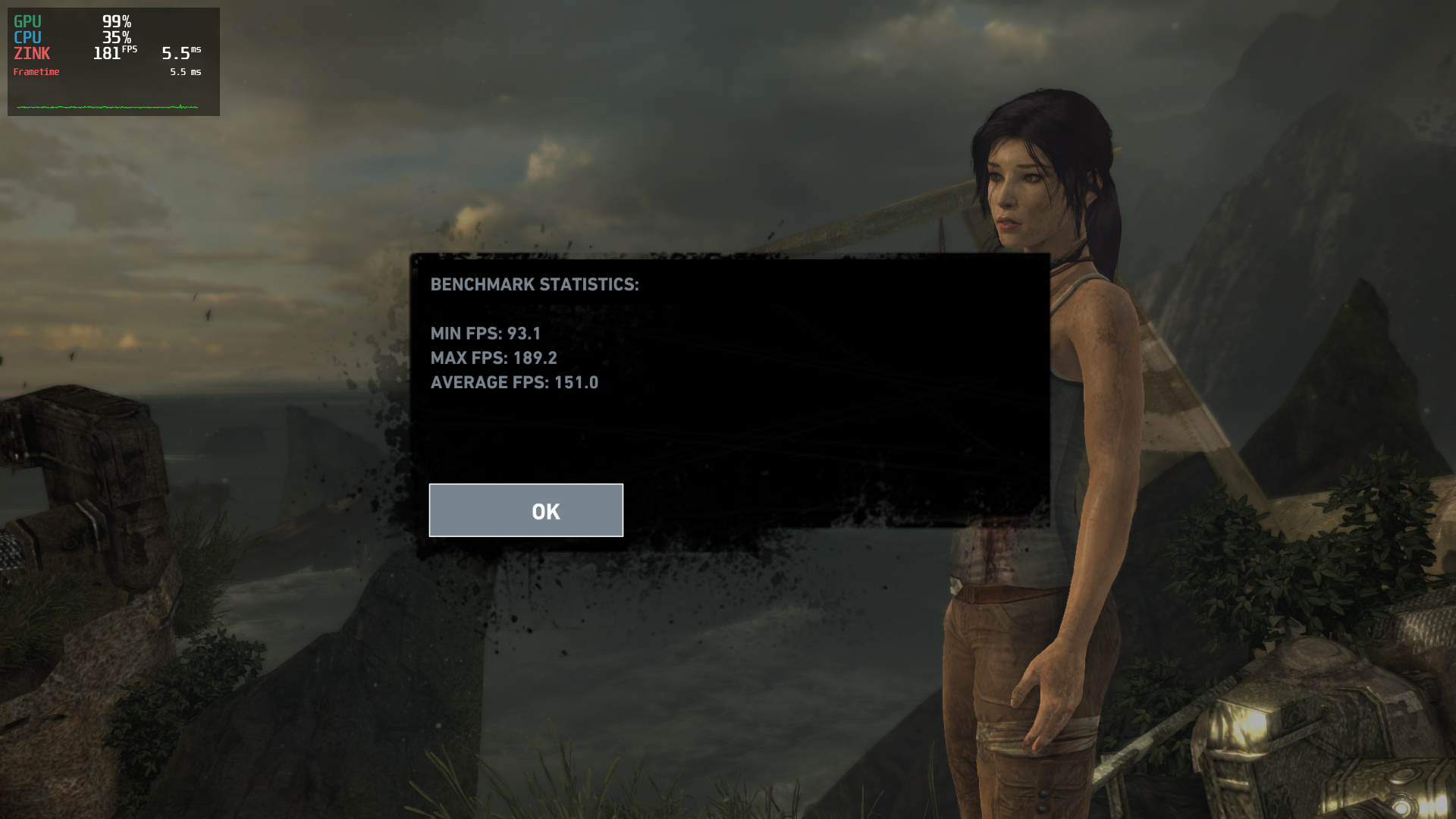NV Envy
What If Zink Was Actually The Fastest GL Driver?
In an earlier post I talked about Copper and what it could do on the way to a zink future.
What I didn’t talk about was WSI, or the fact that I’ve already fully implemented it in the course of bashing Copper into a functional state.
Window System Integration
…was the final step for zink to become truly usable.
At present, zink has a very hacky architecture where it loads through the regular driver path, but then for every image that is presented on the screen, it keeps a shadow copy which it blits to just before scanout, and this is the one that gets displayed.
Usually this works great other than the obvious (but minor) overhead that the blit incurs.
Where it doesn’t work great, however, is on non-Mesa drivers.
That’s right. I’m looking at you, NVIDIA.
As long-time blog enthusiasts will remember, I had NVIDIA running on zink some time ago, but there was a problem as it related to performance. Specifically, that single blit turned into a blit and then a full-frame CPU copy, which made getting any sort of game running with usable FPS a bit of a challenge.
WSI solves this by letting the Vulkan driver handle the scanout image entirely, removing all the copies to let zink render more like a normal driver (or game/app).
So How Is it?
That’s what everyone’s probably wondering. I have zink. I have WSI. I have my RTX2070 with the NVIDIA blob driver.
How does NVIDIA’s Vulkan driver (with zink) stack up to NVIDIA’s GL driver?
Everything below is using the 495.44 beta driver, as that’s the latest one at the time of my testing, and the non-beta driver didn’t work at all.
But first, can NVIDIA’s GL driver even render the game I want to show?
Confusingly, the answer is no, this version of NVIDIA’s GL driver can’t correctly render Tomb Raider, which is my go-to for all things GL and benchmarking. I’m gonna let that slide though since it’s still pumping out those frames at a solid rate.
It’s frustrating, but sometimes just passing CTS isn’t enough to be able to run some games, or there’s certain extensions (ARB_bindless_texture) which are under-covered.
The Numbers Don’t Lie
I’ll say as a prelude that it was a bit challenging to get a AAA game running in this environment. There’s some very strange issues happening with the NVIDIA Vulkan driver which prevented me from running quite a lot of things. Tomb Raider was the first one I got going after two full days of hacking at it, and that’s about what my time budget allowed for the excursion, so I stopped at that.
Up first: NVIDIA’s GL driver (495.44)

Second: NVIDIA’s Vulkan driver (495.44)

As we can see, zink with NVIDIA’s Vulkan driver is roughly 25-30% faster than NVIDIA’s GL driver for Tomb Raider.
In Closing
I doubt that zink maintains this performance gap for all titles, but now we know that there are already at least some cases where it can pull ahead. Given that most vendors are shifting resources towards current-year graphics APIs like Vulkan and D3D12, it won’t be surprising if maintenance-mode GL drivers start to fall behind actively developed Vulkan drivers.
In short, there’s a real possibility that zink can provide tangible benefits to vendors who only want to ship Vulkan drivers, and those benefits might be more than (eventually) providing a conformant GL implementation.
Stay tuned for tomorrow when I close out the week strong with one final announcement for the year.
